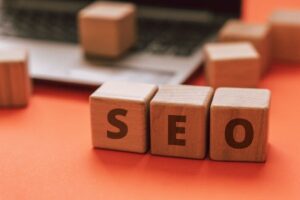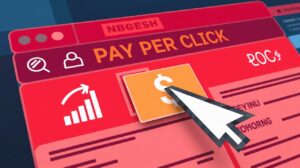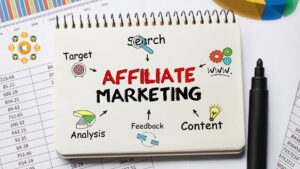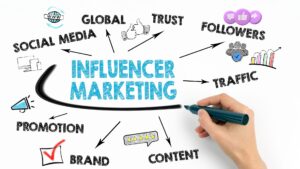
In today’s fast-paced digital world, businesses of all sizes must adapt to stay competitive. This is where digital marketing comes into play. But what exactly is digital marketing, and why is it so important? In this guide, we’ll break down everything you need to know about digital marketing, its components, and how it can benefit businesses.
Table of Contents
What is Digital Marketing?
Digital marketing refers to any marketing effort that uses the internet or electronic devices. Unlike traditional marketing, which relies on print ads, billboards, or television commercials, digital marketing utilizes online platforms such as search engines, social media, email, and websites to connect businesses with their target audience.
The goal of digital marketing is to engage potential customers, drive traffic, generate leads, and convert those leads into loyal customers. It’s all about delivering the right message, to the right people, at the right time through online channels.
Why is Digital Marketing Important?
With billions of people worldwide using the internet, digital marketing offers a way to reach an audience that no traditional medium can. Here are some of the key reasons why digital marketing is essential for businesses:
Global Reach: Unlike traditional marketing, which is limited to a specific geographical area, digital marketing allows businesses to reach a global audience.
Targeted Advertising: Digital marketing allows businesses to target specific demographics, interests, and behaviors, ensuring that their marketing efforts are highly relevant to the audience.
Cost-Effective: Digital marketing is generally more affordable than traditional advertising methods like TV or radio ads. This makes it accessible for small and medium-sized businesses with limited marketing budgets.
Measurable Results: With tools like Google Analytics, businesses can track the performance of their digital campaigns in real-time, allowing them to make data-driven decisions and optimize their strategies for better results.
Personalization: Digital marketing allows businesses to create personalized experiences for customers, which can significantly improve customer satisfaction and retention.
Key Components of Digital Marketing
Digital marketing is a broad field that includes various channels and strategies. Let’s explore the main components:
Search Engine Optimization (SEO)
 SEO (Search Engine Optimization) is the practice of optimizing your website and content so that it ranks higher on search engine results pages (SERPs) for relevant keywords. The higher your website ranks, the more visibility it gets, leading to increased organic traffic.
SEO (Search Engine Optimization) is the practice of optimizing your website and content so that it ranks higher on search engine results pages (SERPs) for relevant keywords. The higher your website ranks, the more visibility it gets, leading to increased organic traffic.
There are three main types of SEO:
- On-Page SEO: Optimizing individual web pages for target keywords by using meta tags, header tags, and keyword placement within the content.
- Off-Page SEO: Building backlinks from reputable websites to improve your website’s authority and ranking.
- Technical SEO: Ensuring your website is technically optimized for search engines by improving site speed, mobile-friendliness, and secure connections (SSL).
Pay-Per-Click Advertising (PPC)
 PPC advertising is a form of paid digital marketing where advertisers pay a fee each time someone clicks on their ad. Google Ads is the most popular PPC platform, but other platforms like Facebook and Instagram also offer PPC advertising.
PPC advertising is a form of paid digital marketing where advertisers pay a fee each time someone clicks on their ad. Google Ads is the most popular PPC platform, but other platforms like Facebook and Instagram also offer PPC advertising.
PPC is effective because it delivers targeted traffic immediately, unlike SEO, which takes time to show results. However, it can become expensive if not managed carefully.
Social Media Marketing (SMM)
 Social media marketing involves promoting your business on platforms like Facebook, Instagram, Twitter, LinkedIn, and YouTube. Social media marketing can be organic (through free posts and engagement) or paid (through ads).
Social media marketing involves promoting your business on platforms like Facebook, Instagram, Twitter, LinkedIn, and YouTube. Social media marketing can be organic (through free posts and engagement) or paid (through ads).
Social media helps brands build awareness, engage with their audience, and create communities around their products or services. It’s also a great way to offer customer support and gather feedback from customers.
Content Marketing
 Content marketing is about creating and distributing valuable, relevant content to attract and engage a target audience. This can include blog posts, videos, infographics, eBooks, and podcasts.
Content marketing is about creating and distributing valuable, relevant content to attract and engage a target audience. This can include blog posts, videos, infographics, eBooks, and podcasts.
The purpose of content marketing is to educate the audience, build trust, and position your brand as a thought leader. Over time, it helps drive organic traffic to your site and generates leads.
Email Marketing
 Email marketing is one of the most effective and cost-efficient digital marketing strategies. It involves sending emails to a targeted list of subscribers to nurture relationships, promote products, and share valuable information.
Email marketing is one of the most effective and cost-efficient digital marketing strategies. It involves sending emails to a targeted list of subscribers to nurture relationships, promote products, and share valuable information.
Email marketing works best when personalized and segmented. A good email campaign can significantly improve customer retention and sales.
Affiliate Marketing
 Affiliate marketing is a performance-based marketing model where businesses reward affiliates (partners) for driving traffic or sales through their promotional efforts. Affiliates typically promote products through blogs, social media, or email marketing, and they earn a commission for each sale or lead they generate.
Affiliate marketing is a performance-based marketing model where businesses reward affiliates (partners) for driving traffic or sales through their promotional efforts. Affiliates typically promote products through blogs, social media, or email marketing, and they earn a commission for each sale or lead they generate.
Influencer Marketing
 Influencer marketing involves collaborating with influencers—individuals with a large and engaged following on social media—to promote your brand or product. This strategy is effective because influencers have established trust with their audience, making their recommendations more authentic and credible.
Influencer marketing involves collaborating with influencers—individuals with a large and engaged following on social media—to promote your brand or product. This strategy is effective because influencers have established trust with their audience, making their recommendations more authentic and credible.
How to Get Started with Digital Marketing
Starting with digital marketing may seem overwhelming, but following a strategic approach can make the process smoother. Here’s a step-by-step guide:
Define Your Goals: Determine what you want to achieve through digital marketing. Whether it’s increasing brand awareness, generating leads, or driving sales, your goals will shape your strategy.
Know Your Audience: Identify your target audience’s demographics, interests, and online behavior. Understanding your audience will help you choose the right platforms and tailor your messaging.
Choose the Right Channels: Depending on your audience and goals, select the digital marketing channels that will be most effective for your business. You don’t need to be everywhere—focus on the platforms where your audience is most active.
Create High-Quality Content: Content is the foundation of digital marketing. Whether it’s blog posts, videos, or social media posts, your content should be engaging, informative, and aligned with your audience’s needs.
Track Your Performance: Use analytics tools to measure the performance of your digital marketing campaigns. Monitoring key metrics such as website traffic, conversion rates, and engagement will help you refine your strategy for better results.
Benefits of Digital Marketing
The advantages of digital marketing extend beyond cost-effectiveness and global reach. Here are some key benefits:
Increased Visibility: Digital marketing helps your brand stand out in the crowded online space, allowing you to reach more potential customers.
Better Audience Engagement: With real-time interactions on social media, email, and your website, digital marketing enables you to engage directly with your audience and build relationships.
Higher Conversion Rates: With the ability to track and analyze data, businesses can fine-tune their strategies to improve conversion rates, turning visitors into leads and leads into customers.
Adaptability: Digital marketing is flexible and can be adjusted quickly based on performance data. Whether it’s tweaking an ad campaign or refining SEO strategies, digital marketing allows you to make changes in real-time.
In Conclusion
In today’s digital age, having a strong online presence is crucial for businesses of all sizes. Digital marketing offers numerous opportunities to connect with your target audience, build lasting relationships, and achieve your business goals. By understanding the key components of digital marketing and developing a well-rounded strategy, you can harness the power of the internet to grow your brand and stay ahead of the competition.




